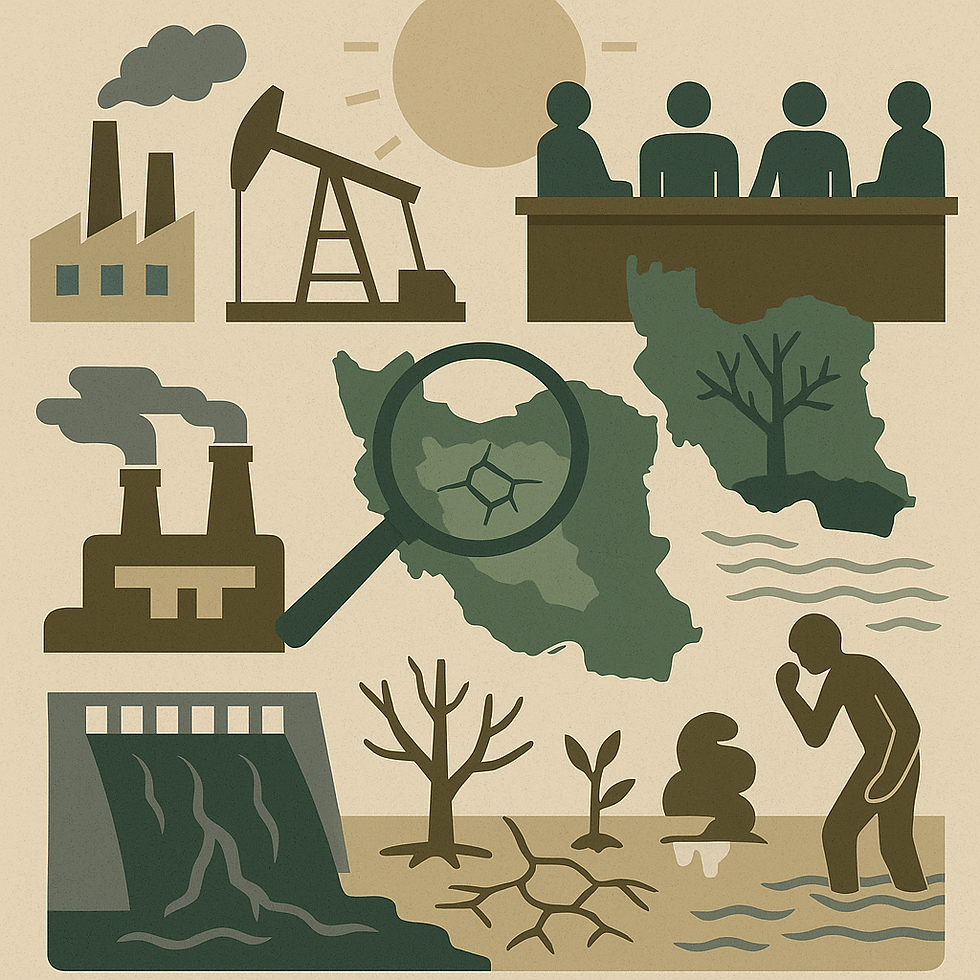Iran's Environmental Truth Commission
- Nikahang Kowsar

- May 7
- 3 min read
A Mirror for Recognizing the Wounds of Nature and People

Nik Kowsar
In many countries, environmental crises are understood not merely as technical or natural problems but as consequences of flawed governance, structural corruption, and social injustice. Therefore, some governments and civil societies, with the aim of rebuilding public trust and restoring lost rights, have turned to establishing bodies such as environmental truth commissions.
In Colombia, the Truth Commission, focusing on environmental justice, documented the effects of the internal conflict on natural resources and amplified the voices of indigenous communities in the peace process. In the Philippines, the role of the military and mining companies in deforestation was exposed. In South America, people's tribunals such as the Amazon Tribunal, by documenting environmental destruction, were able to exert effective pressure on governments. These experiences demonstrate that truth-finding in the environmental field is not only a tool for disclosure but also a vital step for redress, reform, and rebuilding the future.
In Iran, the need for such an institution is felt more than ever. A country that, over four decades, has faced numerous crises such as the destruction of lakes and wetlands, land subsidence, dam construction without assessment, the destruction of groundwater resources, widespread water and soil pollution, and the systematic suppression of environmental activists, cannot chart a course for the future without identifying the roots of these disasters. The Iran Water and Environment Truth Commission can serve as an independent, inclusive, and ethical body responsible for documenting crimes and structural destruction against the country's natural resources. This commission seeks not only to identify perpetrators and damages but also to find ways for redress, reconstruction, and governance reform. Institutions such as the Islamic Revolutionary Guard Corps (IRGC), the Ministry of Energy, consulting firms like Mahab Ghodss, semi-governmental organizations, and complicit media outlets must all be accountable to this commission. The mission of this initiative is to expose hidden statistics, testimonies that have never been heard, and truths that have been buried under layers of media engineering. The voices of displaced farmers, silenced experts, and nature that can no longer cry out must be central to this process.
In practical terms, the formation of a core team of environmental specialists, human rights experts, journalists, archivists, and documentary filmmakers is essential. Initially, this body can function as a "shadow truth commission" under the umbrella of civil society, with the aim of preparing the social and political ground for official recognition. Gathering testimonies through secure channels, documenting audio-visual narratives, analyzing censored data, and collaborating with platforms such as NASA GRACE and Google Earth Engine can strengthen the scientific and field basis of this project.
For accurate documentation, tools such as information requests, data mining in budget reports, and comparing domestic data with international assessments should also be used. In this path, cooperation with organizations such as Human Rights Watch and UN special rapporteurs on water, environment, and human rights is essential.
If the conditions for political transition are met, this commission can have a legal mandate for its activities. The draft "Iran Water and Environment Truth Commission Law" can guarantee the transparency of official archives, the holding of public hearings for testimonies, the documentation of destruction, and the design of mechanisms for redress and ecosystem restoration. This commission must operate independently of the government, with public oversight and the participation of scientific and civil institutions, and based on the principles of transitional justice.
One of the international tools that can be used before the official establishment of this commission is the Magnitsky Act. This law allows countries to impose sanctions on individuals or entities responsible for environmental destruction, the suppression of activists, and organized corruption without the need for domestic approval. Accurate documentation of the suppression of activists like Kavous Seyed-Emami or the use of resources to exert pressure on projects implemented without scientific assessment can pave the way for international sanctions and the delegitimization of the perpetrators of destruction. Finally, the design and publication of a live report on activities, testimonies, case studies, reform proposals, and redress mechanisms is a vital necessity. This report should be live, updatable, and publicly accessible, and should be usable in courts, media, academia, and national and international dialogues. The future of Iran's water and environment will not be rebuilt without recognizing the wounds of the past.

























Comments